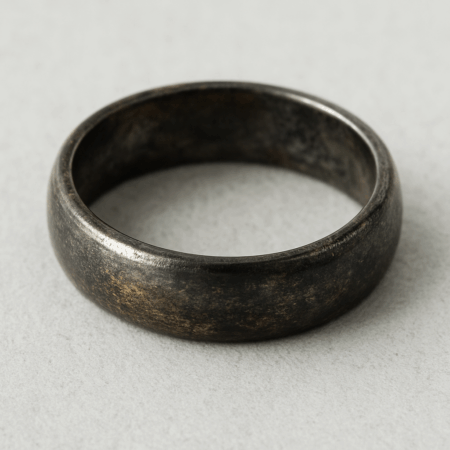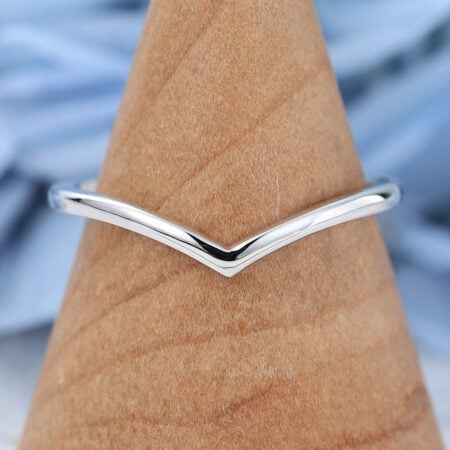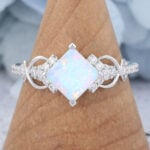Does Sterling Silver Tarnish? Causes, Removal, and Prevention Tips
Sterling silver has long been admired for its timeless beauty and versatility, making it a favorite choice in jewelry, homeware, and accessories. Yet many people eventually find themselves wondering: Does Sterling Silver Tarnish? This question often arises when a once-bright sterling silver jewelry begins to look dull or shows unexpected changes in color. Understanding why this happens, what causes it, and how to properly care for sterling silver is the first step in keeping your pieces looking radiant for years to come.
What is Sterling Silver?
Sterling Silver, also known as S925 sterling silver, is a bright, widely used alloy in jewelry, tableware, and decorative items. It offers excellent malleability and workability while maintaining a certain level of corrosion resistance. Unlike pure silver, sterling silver typically contains 92.5% silver, with the remaining 7.5% usually made up of copper or other metals. This combination enhances the durability of the otherwise soft silver. However, due to its high silver content, Sterling Silver remains relatively soft, which is why 14k and 18k gold are often preferred for everyday wearable jewelry.
Does Sterling Silver Tarnish?
Because sterling silver is an alloy containing metals like copper, prolonged exposure to air, moisture, sweat, cosmetics, or sulfur-containing substances can cause oxidation on the surface, resulting in a black or dark surface layer known as “tarnish.” So sterling silver can and will actually tarnish. However, this surface oxidation only occurs on the surface of the metal and has no effect on its internal structure. Regular cleaning and maintenance can restore its luster.
Common Causes of Tarnish on Sterling Silver
Air and Oxygen
One of the most common causes of tarnish on sterling silver is exposure to air and oxygen. Over time, the silver reacts with oxygen, causing it to oxidize and develop a darkened layer. This natural chemical reaction, known as sterling silver oxidation, is inevitable but can be managed with proper cleaning and storage.
Sulfur Compounds
Another major cause of tarnish on sterling silver is contact with sulfur compounds, which are commonly found in foods, rubber, and even the air. When silver reacts with these compounds, it begins to change color, forming a dark or blackish layer on the surface. This reaction is a natural process and is one of the main reasons sterling silver loses its original shine over time.
Moisture and Humidity
Moisture and high humidity can also cause tarnish or rust on sterling silver. While silver itself does not rust like iron, prolonged exposure to water can cause chemical reactions with the copper content in the alloy. As a result, sterling silver will rust and tarnish in water in the sense that it may corrode or darken more quickly. This is why it is best to keep sterling silver jewelry dry and avoid wearing it while swimming, showering, or exercising.
Skin Contact
Skin contact is another common reason sterling silver tarnishes. Natural oils, sweat, and acids from the skin can react with the metal, causing it to darken over time. The effect varies from person to person, as body chemistry plays a role in how quickly tarnish develops.
Household Chemicals
Household chemicals are also a frequent cause of tarnish on sterling silver. Products such as cleaning agents, perfumes, lotions, and even hairsprays often contain sulfur, chlorine, or other reactive ingredients that can damage the metal’s surface. When exposed to these substances, sterling silver quickly loses its shine and develops discoloration. Keeping silver away from harsh chemicals is essential to preserving its appearance.
Storage Conditions
Improper storage conditions can accelerate tarnish on sterling silver. When silver is left in open air, exposed to humidity, or stored near materials like rubber or certain papers, it is more likely to react and darken. Storing sterling silver in airtight containers or anti-tarnish pouches helps reduce exposure to harmful elements and keeps the metal looking bright for longer.

How to Remove Tarnish from Sterling Silver?
1. Gentle Cleaning Methods
Gentle cleaning is the preferred method for removing surface oxidation from Sterling Silver. This can usually be done by gently wiping with a silver cloth; its fine fibers effectively remove minor tarnish without scratching the metal. For lighter oxidation, soak the jewelry in warm water with a small amount of mild soap for a few minutes, then gently clean with a soft cloth or soft-bristle brush. Rinse with clean water and dry thoroughly.
2. Home Remedies
There are also some simple ways to remove the oxide layer from Sterling Silver at home. A common method is to use a combination of baking soda and aluminum foil: Line a bowl with aluminum foil, add hot water and a small amount of baking soda, and place the silver jewelry in the solution. After a few minutes, the oxide layer will gradually fade. Rinse with clean water and wipe dry. This is because an electrochemical reaction occurs between the aluminum and silver, converting the blackened silver sulfide back to its natural color.
3. Professional Cleaning
When Sterling Silver (standard silver) is severely oxidized or has stubborn surface stains, seeking professional cleaning is the most effective and safest option. Jewelry stores are typically equipped with ultrasonic cleaners, specialized polishing tools, and specialized silver cleaning fluids. These can quickly remove the oxidation layer without damaging the jewelry, restoring its original luster and brightness.
Prevention Tips: How to Keep Sterling Silver from Tarnishing
Proper Storage
Proper storage is one of the most effective ways to prevent sterling silver from tarnishing. Keeping silver in airtight containers or anti-tarnish bags reduces its exposure to air, moisture, and sulfur compounds. It is also best to store each piece separately to avoid scratches and chemical reactions between items. Adding silica gel packs or anti-tarnish strips can further help maintain a dry, clean environment that keeps sterling silver bright for longer.
Avoid Moisture
Avoiding moisture is essential to slowing down tarnish on sterling silver. Water, sweat, and high humidity can accelerate chemical reactions that darken the metal’s surface. To keep silver jewelry in good condition, it’s best to remove it before swimming, showering, or exercising. After cleaning, always dry the pieces thoroughly before storage, as even small amounts of moisture can lead to faster tarnishing.
Limit Chemical Exposure
Limiting chemical exposure is key to preserving the shine of sterling silver. Everyday products like perfumes, lotions, hairsprays, and household cleaners often contain sulfur, chlorine, or other harsh substances that can quickly cause discoloration. To protect your jewelry, put it on after applying cosmetics and keep it away from cleaning agents. Reducing contact with these chemicals will help sterling silver maintain its brightness much longer.
Wear Regularly
Wearing sterling silver regularly can actually help slow down tarnishing. Natural oils from your skin create a protective layer that prevents excessive oxidation, keeping the silver looking brighter. However, it’s important to remove jewelry during activities that involve water, sweat, or harsh chemicals to avoid accelerated tarnish. Regular wear combined with proper care helps maintain the metal’s shine over time.
Routine Cleaning
Routine cleaning is essential to keep sterling silver looking its best. Even light tarnish can accumulate over time, so gently wiping your jewelry with a soft silver cloth on a regular basis helps remove surface oils and dirt before they cause discoloration. For more thorough cleaning, using mild soap and warm water or a gentle silver cleaner can restore shine without damaging the metal. Consistent maintenance prevents tarnish from building up and prolongs the life of your sterling silver pieces.
Is Tarnish Harmful to Sterling Silver?
Tarnish itself does not affect the structure of sterling silver; it only impacts the appearance by forming a dark layer of oxidation or sulfide on the surface without compromising the metal’s strength or hardness. Therefore, when your silver jewelry tarnishes, simply cleaning it promptly is enough to restore its original shine.
Sterling Silver vs Other Metals: Tarnish Resistance
Sterling Silver vs Pure Silver
Sterling silver contains 92.5% silver and is harder and more durable than pure silver, which is nearly 99.9% silver and very soft. While both can tarnish, pure silver oxidizes more quickly and is easier to scratch.
Sterling Silver vs Gold
Gold, especially 14k or 18k, is highly resistant to tarnish and corrosion. Sterling silver may darken over time, whereas gold maintains its shine with minimal maintenance.
Sterling Silver vs Platinum
Platinum is extremely stable and almost immune to tarnish or oxidation. Sterling silver, though durable, requires regular cleaning to maintain its brightness.
Sterling Silver vs Copper
Copper oxidizes and darkens quickly when exposed to air and moisture. Sterling silver tarnishes more slowly but still requires care to prevent discoloration.

Conclusion
In conclusion, does sterling silver tarnish is a question every silver owner should consider. While tarnish is a natural chemical reaction that darkens the metal, it does not harm the structure of sterling silver. By understanding does sterling silver tarnish, how does silver tarnish, how to remove the tarnish on sterling silver and how to prevent silver from tarnishing , you can keep your sterling silver pieces looking bright and beautiful for years to come.
FAQs About Does Sterling Silver Tarnish
What is silver tarnishing?
Silver tarnishing is the darkening of silver caused by a chemical reaction with sulfur, oxygen, or moisture in the environment.
Does sterling silver tarnish, rust or oxidize?
Silver does not rust, but it can tarnish and oxidize, forming a dark layer of tarnish over time.
Does sterling silver fade or turn colors? Does sterling silver turn green?
Sterling silver may darken or develop a patina, but it does not turn green. Any green discoloration is usually caused by reactions with copper in the alloy or skin chemicals.
Does all silver tarnish? What type of silver won't tarnish?
Most silver alloys, including sterling silver, tarnish over time. Pure silver (99.9%) tarnishes very slowly and some coated or rhodium-plated silver can resist tarnish.
Can you wear sterling silver in the pool or shower?
It’s not recommended. Chlorine, saltwater, and soaps can accelerate tarnishing and damage the finish.
How to protect sterling silver from tarnishing?
Store silver in airtight containers, keep it dry, avoid chemical exposure, and wear it regularly to maintain a protective layer from natural skin oils.
Does sterling silver last? Can you wear sterling silver all the time?
Yes, sterling silver is durable and can last a lifetime with proper care. Wearing it daily is fine as long as it’s cleaned and protected from harsh chemicals.
Is sterling silver tarnish-free?
No, sterling silver will eventually tarnish, though proper care slows the process.
How to store sterling silver?
Store in airtight bags, anti-tarnish pouches, or lined jewelry boxes, and keep pieces separate to avoid scratches.
Does silver tarnish in chlorine?
Yes, chlorine accelerates tarnish and can damage the metal’s surface.
How fast does silver tarnish? How long does it take for silver to tarnish?
Tarnish speed depends on exposure to air, moisture, and chemicals; it can appear in days or take months in clean, dry conditions.
Does fine silver tarnish?
Yes, but much more slowly than sterling silver due to its higher purity and lower copper content.
Why does silver tarnish?
Silver tarnishes due to chemical reactions with sulfur compounds, oxygen, moisture, or acids, forming a dark surface layer.
How durable is sterling silver?
Sterling silver is fairly durable, especially compared to pure silver, but it is softer than gold, platinum, or stainless steel.
How to clean sterling silver?
Use a soft silver cloth, mild soap with water, home remedies like baking soda, or professional cleaning for heavy tarnish.



